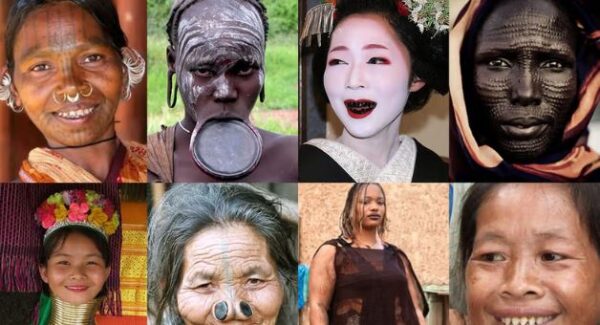Lifestyle
7 unusual signs of respect in different cultures of the world
Understanding these cultural differences is fascinating and essential in our increasingly globalised world.
1. Avoiding eye contact in Japan
In many Western cultures, making eye contact is a sign of confidence and respect. However, in Japan, avoiding direct eye contact is a sign of respect, especially when interacting with someone of higher status or authority.
Staring directly into someone’s eyes can be seen as confrontational or disrespectful. Instead, Japanese people look at a person’s neck or lower face during a conversation to maintain politeness and show humility.
2. Spitting as a blessing in the Maasai tribe
In the Maasai tribe of Kenya and Tanzania, spitting is considered a sign of respect and blessing. When greeting elders, Maasai warriors spit on their hands before offering a handshake. Parents also spit on newborn babies to wish them good luck and a prosperous future.
This act, which might seem offensive in many cultures, is deeply rooted in the Maasai tradition and signifies good fortune and respect.
3. Bowing low in South Korea
In South Korea, bowing is a common way to show respect. The depth of the bow depends on the relationship and the situation.
A slight bow with the head is used for casual greetings, while a deep, 90-degree bow is reserved for formal occasions and when showing deep respect, such as at funerals or when apologising. The lower and longer the bow, the greater the respect being shown. Bowing is an integral part of South Korean culture, reflecting hierarchy and social etiquette.
4. Greeting with a “malo” in Tonga
In Tonga, a traditional greeting called “malo e lelei” involves gently pressing noses and foreheads together.
This gesture, known as the “honi,” is a sign of respect and a warm welcome. It is used during important ceremonies and when meeting elders. The honi signifies the sharing of breath and life force, creating a sense of unity and mutual respect between individuals.
5. Offering food with both hands in India
In India, offering food or any gift with both hands is a sign of respect and sincerity. Using both hands shows that the giver is fully engaged and respectful of the receiver. It is considered rude and dismissive to offer something with just one hand, as it can imply a lack of interest or effort. This practice reflects the importance of hospitality and respect in Indian culture, where food is shared as a way of building relationships.
6. The plate of respect in Ethiopia
In Ethiopian culture, it is customary to serve guests the best portions of food as a sign of respect and honour. This tradition is known as the “gursha.” During a meal, hosts will often place a piece of injera (a type of flatbread) with a generous portion of stew into the mouth of their guests.
This act of feeding someone directly is a deeply respectful gesture, symbolising trust, care, and the bond between the host and guest.
7. Silence in Finland
In Finland, silence is often considered more respectful than constant chatter. Finnish people value quietness and view it as a sign of respect for personal space and the other’s thoughts. In meetings and social gatherings, periods of silence are normal and appreciated. Interrupting someone or filling every pause with conversation can be seen as disrespectful. Silence allows for reflection and shows that one values the presence of others without needing to fill the air with words.











